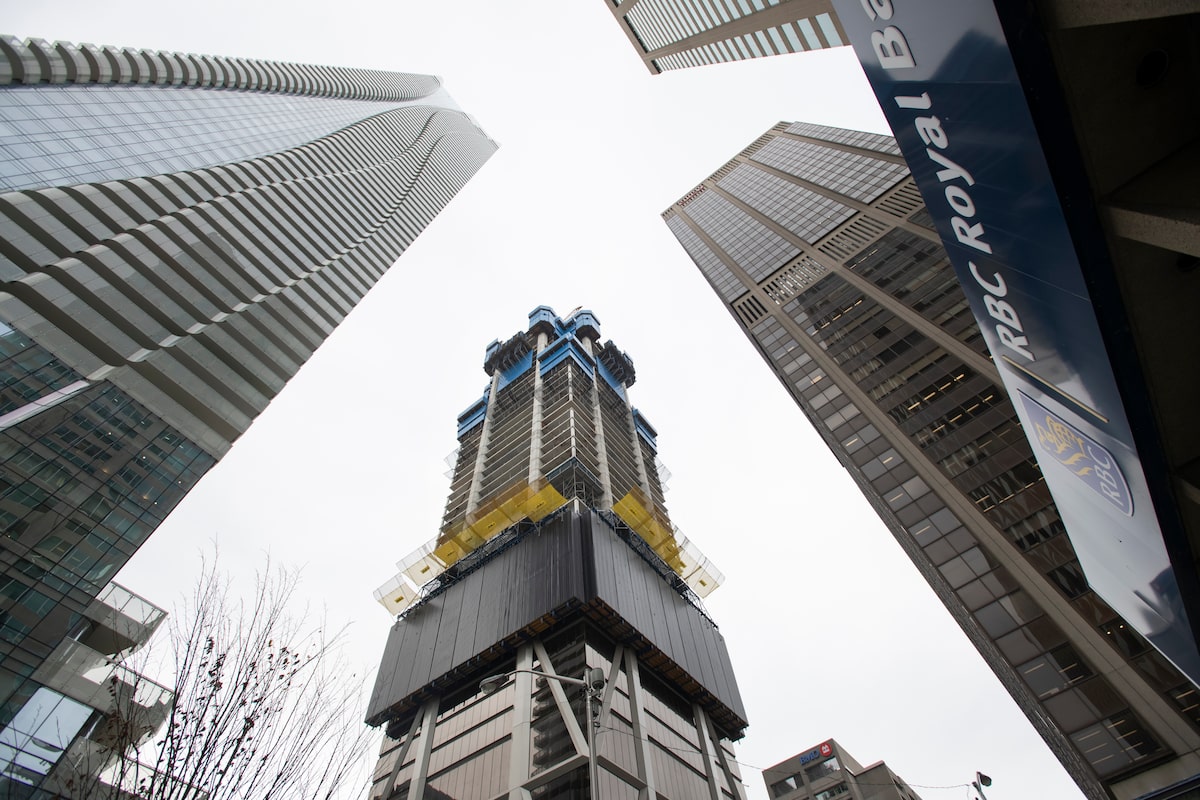The federal Liberals and Conservatives want to “solve” the housing crisis by making it easier for builders to build new units.
Sadly, with interest rates and construction prices at current levels, it seems unlikely that private companies will be able to provide the 3.5 million houses we need to restore affordability.
We need all levels of government to start building housing, not just wait for white knights from the private sector to ride in and save our middle class dreams.
Residential property developers are facing rising insolvencies as they struggle with higher borrowing and construction costs – and industry experts warn the trend is likely to worsen as interest expenses remain elevated.
…
At this pace, Canada is on track to reach about 240 real estate insolvencies this year, which would be 57-per-cent higher than 2023 and 13-per-cent higher than 2009, when a wide swath of businesses ran into problems owing to the financial crisis and global recession.
…
And that does not include the number of developers and projects that have been forced into receivership for not paying bills. The Office of the Superintendent of Bankruptcy does not include receiverships with its publicly available bankruptcy statistics. However, insolvency experts say they are seeing more projects go into receivership.
So far this year, the real estate sector accounts for 55 per cent of the receiverships recorded by Insolvency Insider Canada, a website that tracks the largest insolvencies in the country. That compares to 30 per cent last year and 33 per cent in 2022.
…
Today, the cost of residential construction is 81-per-cent higher across Canada’s major cities compared to 2017 and more than double – up 107 per cent – in the Toronto region, according to Statscan data.



I work at a plant that produces a common construction material. When the company heard the government wants to build more houses, the company raised our prices. I’m absolutely sure this has happened with every business that is involved in construction. When the government says they’re going to spend money buying something to make people happy, corporations jack up the price and blame “increased demand”.
That’s how supply and demand works. When the government decides to build something, they create more demand for materials but they don’t create more supply. If they could snap their fingers like a genie and create a pile of building materials out of thin air then they could make prices go down. But obviously they can’t do that!
You might say “oh well the construction materials companies could just keep charging the same prices and be satisfied with their current profits” and you’d be right, they could do that. But then the distributors and retailers would raise prices and capture those profits themselves! You could also insist that the distributors and retailers do the same thing. But then you’d get private individuals stockpiling the materials and reselling them at a profit, just like people did with toilet paper shortages during COVID.
You could then say “oh but we’ll make that illegal too” then you end up with a black market. Now you’ve got to hire tons of police officers to fight against the black market you created with your price control policies.
Ultimately you can’t win against the laws of supply and demand.
We could create a nationalized lumber (or whatever else) company to compete with the private ones. Make them compete with someone who isn’t motivated by profit.
It’s not just lumber. It’s cement, shingles, drywall, bricks, nails, screws, floor tile, cabinets, carpet, electrical, plumbing, lightbulbs, ventilation, heating, cooling, landscaping, exterior decor…
There’s thousands of different materials and parts that go into a house! Lumber is just the tip of the iceberg. Are you going to have the government run all of those industries? How do you deal with corruption?
Way to not fucking listen dude.
All those things are covered when I said “and whatever else.”
And no, I didn’t say run the industries, I said start a nationalized company not motivated by profit for the other companies to compete with.
This should be done in every essential industry: housing, food, power, telecoms.
Look at cell phone rates in Saskatchewan. It works.
I mean there is actually increasing demand so I’m not really sure if this is an example of corporate greed or if it’s just a realistic adjustment to the market. If the government is effectively subsidizing housing starts, it’s pretty reasonable to expect that without removal of tariff barriers and trade barriers for building materials, that the price of building materials would just increase in Canada overall. The only variables that Canada can really control is the price of softwood lumber due to the prevalence of stumpage fees, and the cost of importing foreign skilled trades labour (which is vehemently opposed by trade unions in Canada.) I can only hope that your plant is reinvesting its profits into increasing supply instead of paying out dividends, which would improve the ability to facilitate housing starts in the long run.